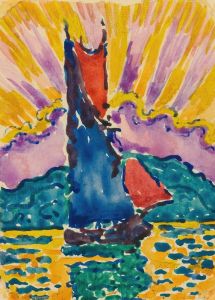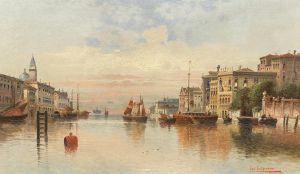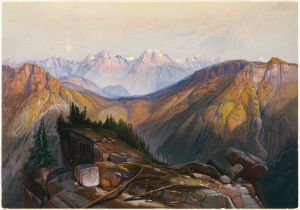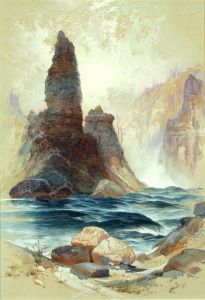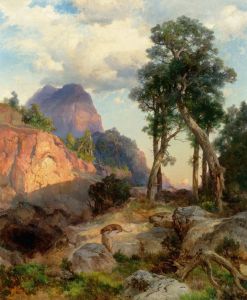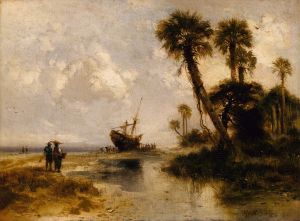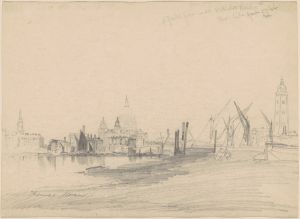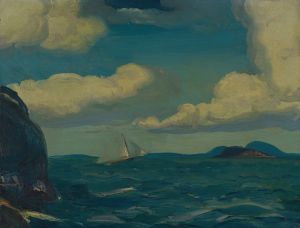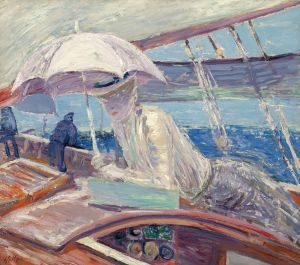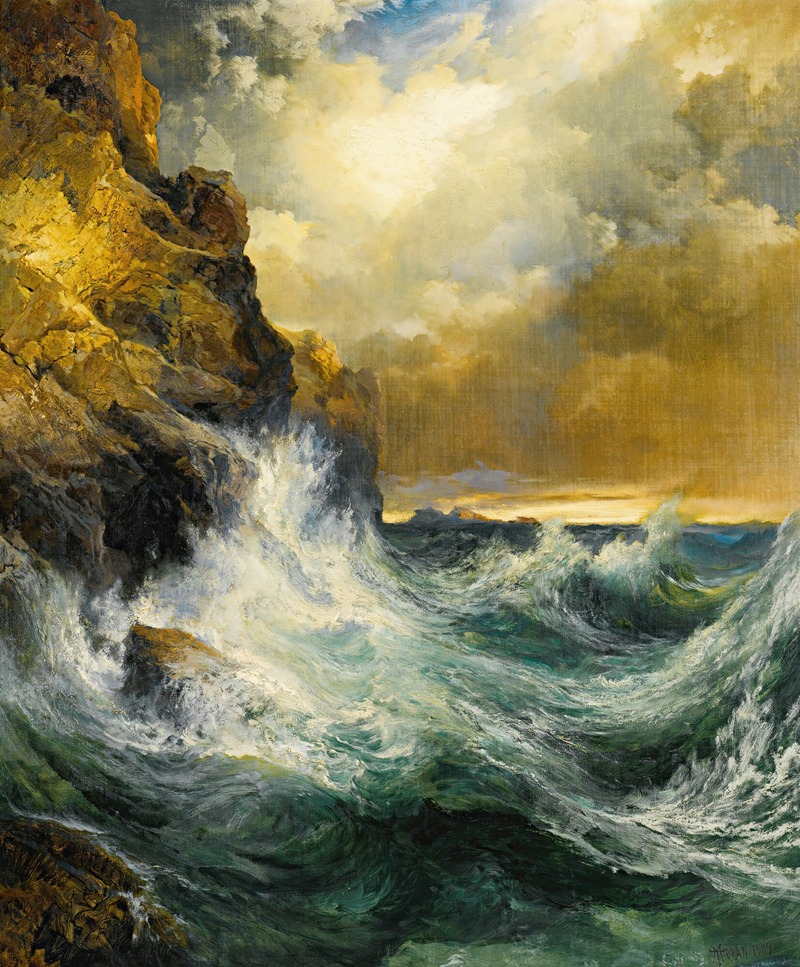
The Receding Wave
A hand-painted replica of Thomas Moran’s masterpiece The Receding Wave, meticulously crafted by professional artists to capture the true essence of the original. Each piece is created with museum-quality canvas and rare mineral pigments, carefully painted by experienced artists with delicate brushstrokes and rich, layered colors to perfectly recreate the texture of the original artwork. Unlike machine-printed reproductions, this hand-painted version brings the painting to life, infused with the artist’s emotions and skill in every stroke. Whether for personal collection or home decoration, it instantly elevates the artistic atmosphere of any space.
Thomas Moran was an American painter and printmaker of the Hudson River School in New York whose work often featured the rugged landscapes of the American West. One of his lesser-known works, "The Receding Wave," is a fine example of his ability to capture the sublime beauty of nature, though specific details about this particular painting are not as widely documented as some of his other works.
Moran was born in 1837 in Bolton, England, and his family immigrated to the United States when he was a child. He began his artistic career as an apprentice to a wood-engraver in Philadelphia and later worked as an illustrator. His artistic talents were soon recognized, and he became a prominent figure in the Hudson River School, a mid-19th century American art movement embodied by a group of landscape painters whose aesthetic vision was influenced by romanticism.
"The Receding Wave" reflects Moran's fascination with the natural world and his skill in depicting the interplay of light and shadow. While specific details about the painting's creation, such as the exact date and location, are not well-documented, it is consistent with Moran's broader body of work, which often focused on dramatic landscapes and seascapes. His paintings are characterized by their luminous color palette and meticulous attention to detail, capturing the grandeur and majesty of the natural environment.
Moran's work was heavily influenced by his travels, particularly his expeditions to the American West. These journeys provided him with the opportunity to sketch and paint some of the most iconic landscapes in the United States, including Yellowstone, the Grand Canyon, and the Rocky Mountains. His paintings played a significant role in popularizing these natural wonders and even influenced the establishment of national parks.
Although "The Receding Wave" may not be as famous as Moran's depictions of the American West, it still embodies the same artistic principles that made his work so influential. The painting likely captures a coastal scene, with the titular wave receding from the shore, showcasing Moran's ability to convey movement and the transient beauty of nature. His use of light and color would have been employed to evoke a sense of tranquility and awe, inviting viewers to appreciate the ephemeral moments in the natural world.
Moran's legacy as an artist is significant, as his work helped to shape the American perception of the wilderness and contributed to the conservation movement. His paintings are held in numerous public and private collections, and he is remembered as one of the foremost landscape painters of his time.
In summary, while specific information about "The Receding Wave" is limited, it can be appreciated within the context of Thomas Moran's broader oeuvre. His dedication to capturing the beauty of the natural world and his influence on American art and conservation remain enduring aspects of his legacy.





